Measure your catch
Recreational fishing rules
Download the Qld Fishing 2.0 app for the latest rules. You can also use the 'My fishing' feature to record your fishing trips and share your stats and photos.
In Queensland, there are minimum and maximum size limits for certain tidal and freshwater species.
Return undersized, oversized, no-take or closed season species to the water immediately to ensure they have the best chance of survival.
Fish
Measure from the tip of the snout to the end of the tail. The fish must not be manipulated to increase or decrease its length.
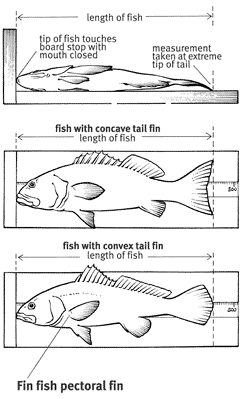
Crabs
Female blue swimmer crabs and female mud crabs are no-take.
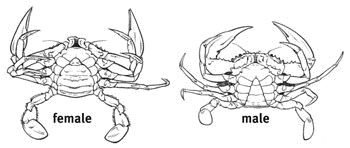
Mud crab
Measure the widest part of the shell.
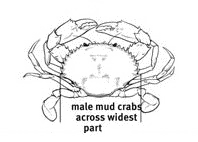
Blue swimmer crab
Measure the distance between the notch immediately in front of the base of the large horizontal spine on one side, and the same notch on the other side.
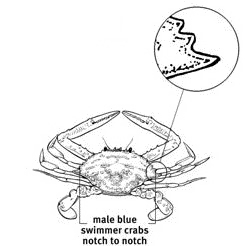
Spanner crab
Measure the distance between the tip of the spike in the middle of the front edge of the shell and the middle of the rear edge of the shell.
If the shell is damaged or separated from the crab’s body, measure the sternite at the widest part of the front breastplate (directly in front of the base of the main claws). This must be a minimum of 3.7 cm.
The size limit applies regardless of the condition of the shell.
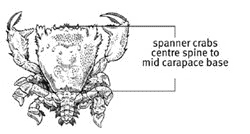
Three-spot crab
Measure the widest part of the shell.
Tropical rocklobster
Measure the distance from the front of the shell between the two spikes on the head to the rear edge of the shell where the tail begins.
If the shell is damaged or separated, measure the tail. To do this, measure the top surface of the tail laid flat on a horizontal surface, from the front edge of the shell where the tail begins to the rear edge of the shell where the tail fins begin.

Sharks and rays
Sharks, guitarfish and shovelnose rays
- Overall length: Measure from tip of the nose to the end of the tail.
- Interdorsal length: Measure from the rear edge of the first dorsal fin to the rear edge of the second dorsal fin.
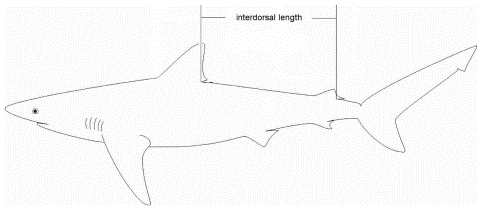
Other rays
- Overall length: Measure from the tip of the nose to the end of the tail.


